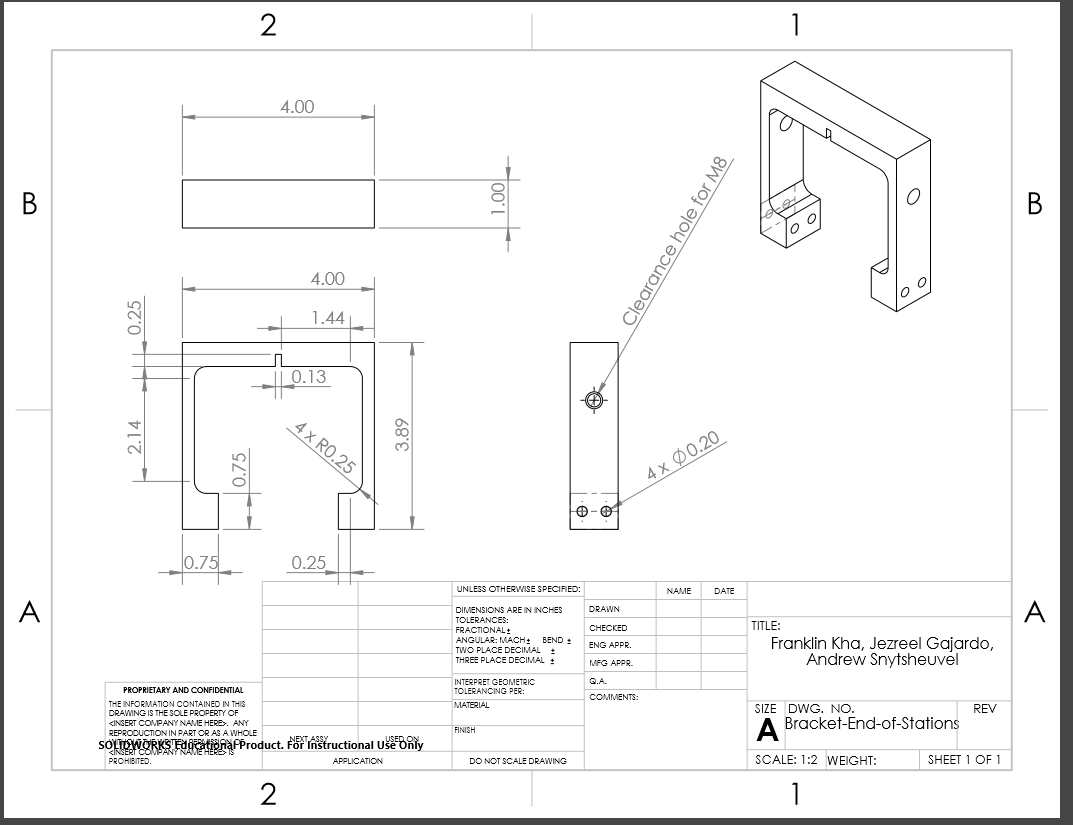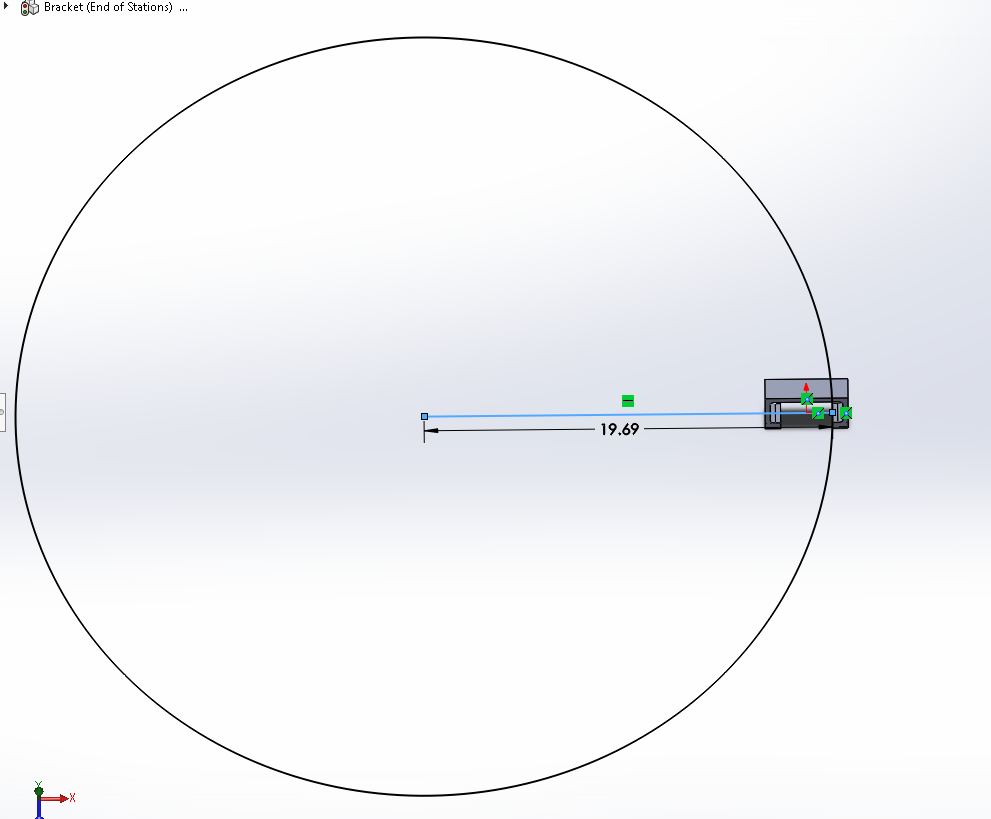this week I worked on presentation and ensuring the slides were all approached with assertion-evidence. I also distributed the tasks for the final report first draft, giving my best in terms of distributing an even workload and based on individual strengths. I completed my portion (approximately three pages of writing) which included reading the articles that were linked to us. Following that, I began to research articles and take notes for the third writing assignment. I also did FEA on the curved rail and PLA U-Bracket which we needed urgently. At a 5-pound force, the absolute worst deformation that would occur for the curved rail is about .03mm. As for the U-Bracket, there is about a 0.4 mm deformation at the right corner when there is a 5-pound force applied to the bracket at the shown locations. The deformation is rather large but this is an exaggeration of what the U-Bracket will actually be facing since the bogie's weight will be distributed across the two corners equally (roughly 2.5-pounds each) and then mitigated by the rail that will be carrying most of the bogie's weight (which is not depicted). However, we may address this deformation anyway by thickening the sides of the U.








